There are various types of MS:
- Clinically Isolated Syndrome
- Relapsing-remitting MS
- Secondary progressive MS
- Primary progressive MS
Clinically Isolated Syndrome (CIS)
The earliest form of MS is clinically isolated syndrome, or CIS. CIS refers to a single episode of neurological symptoms suggestive of multiple sclerosis. Often, on investigation using MRI the doctor finds evidence of another abnormality in the brain or spinal cord. Having multiple attacks of symptoms defines relapsing-remitting MS, the most common disease course at the time of diagnosis.
(figure 1a)
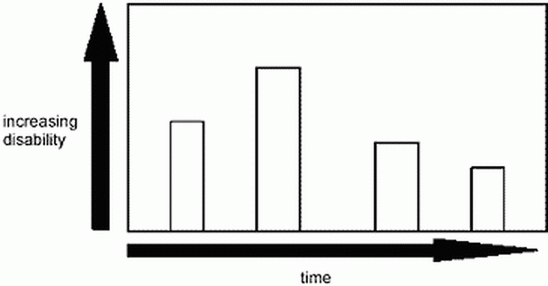
(figure 1b)
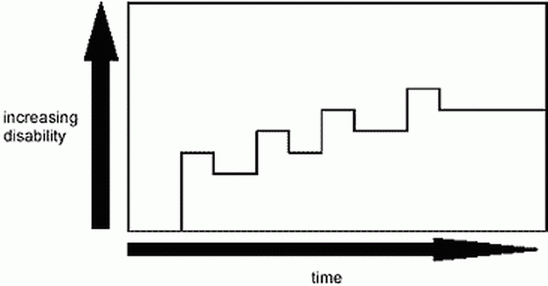
Relapsing-remitting MS (RRMS)
Relapsing-remitting MS (RRMS) is characterized by unpredictable but clearly defined relapses (also known as attacks, exacerbations or flare-ups) during which new symptoms appear or existing ones get worse. In the period between relapses, recovery is complete (figure 1a) or nearly complete (figure 1b) to pre-relapse function (remission).
Secondary Progressive MS (SPMS)
Most people with relapsing-remitting will eventually transition to a phase of the disease called secondary progressive. This phase of the disease has progressive worsening and fewer relapses (figure 2a), though sometimes there are occasional relapses and minor remissions and plateaus (figure 2b).
(figure 2a)
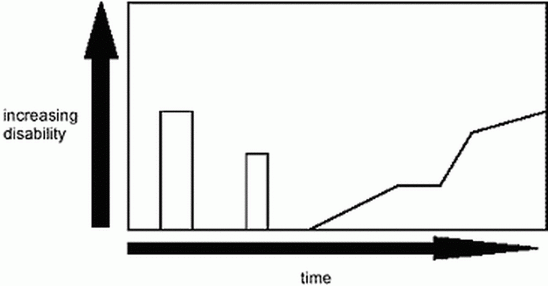
(figure 2b)
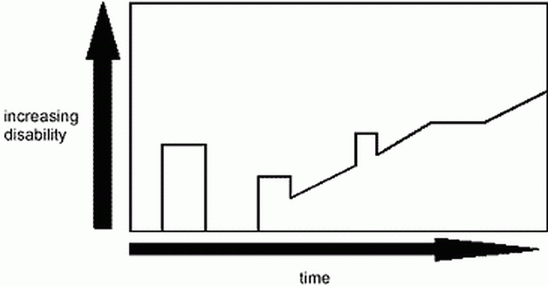
(figure 3a)
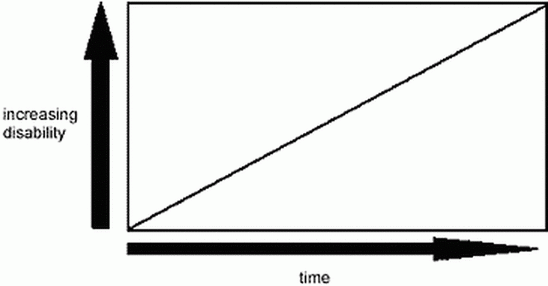
(figure 3b)
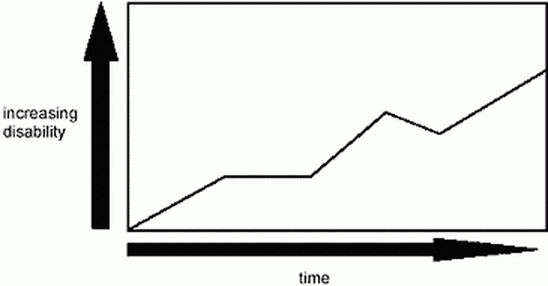
Primary Progressive MS (PPMS)
Primary progressive MS (PPMS) is characterized by a slow accumulation of disability, without defined relapses (figure 3a). It may stabilize for periods of time, and even offer minor temporary improvement (figure 3b) but overall, there are no periods of remission. Approximately 12 per cent of people diagnosed with MS have PPMS. About five per cent of people diagnosed with PPMS experience occasional relapses with steadily worsening disease from the beginning.